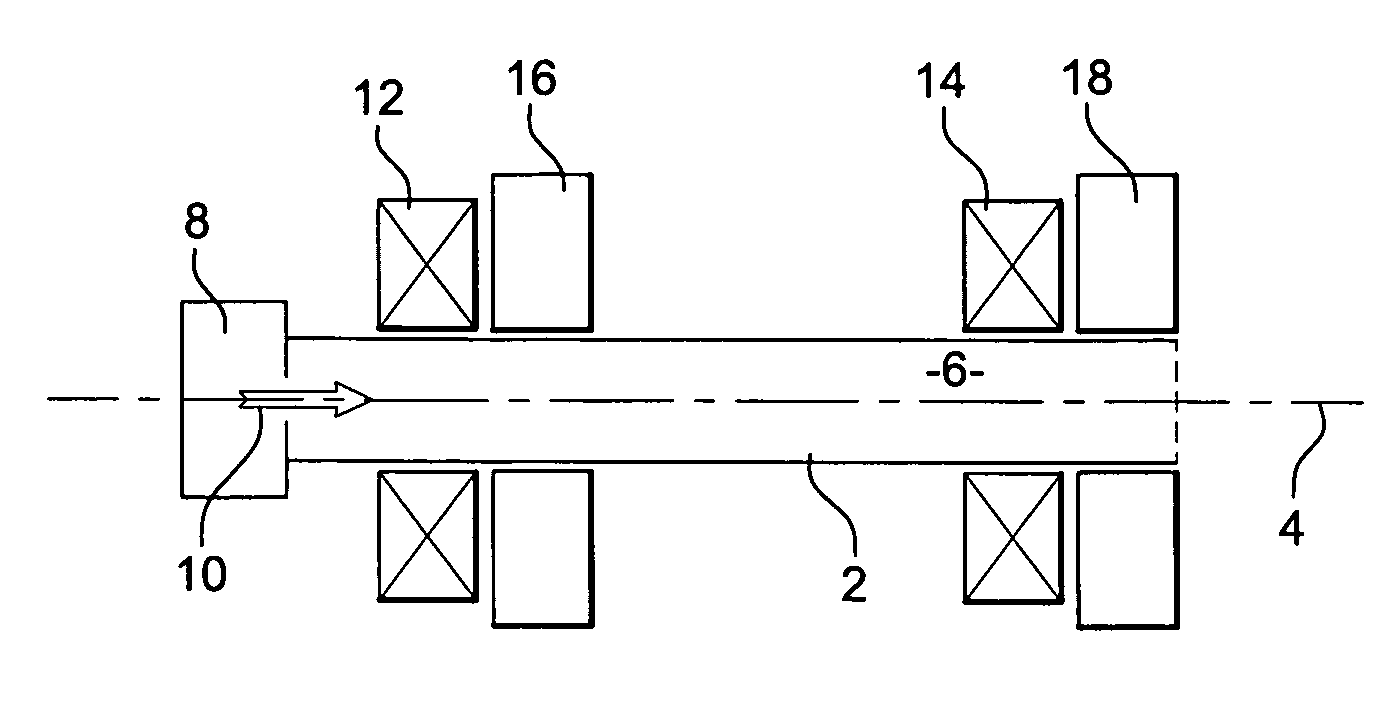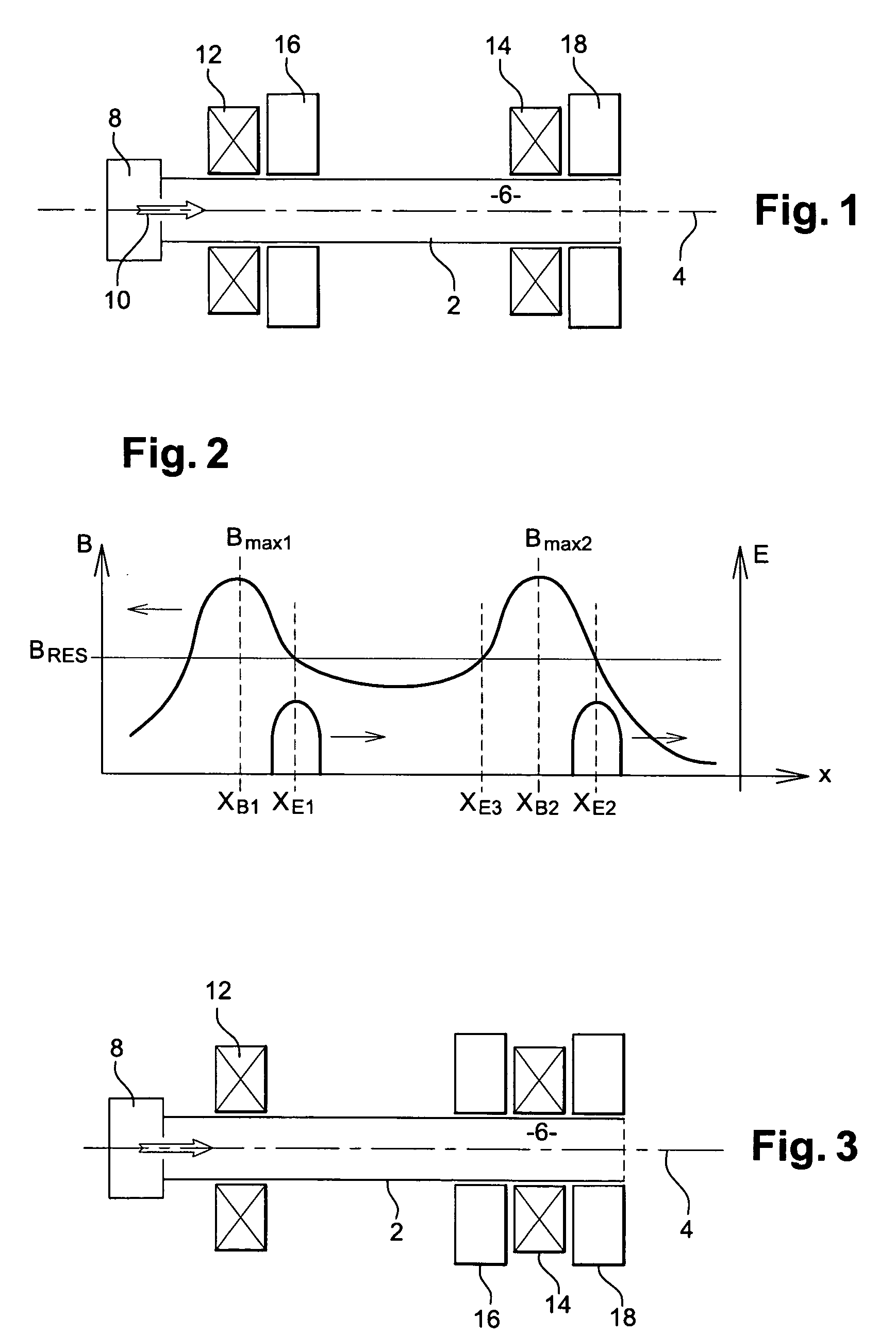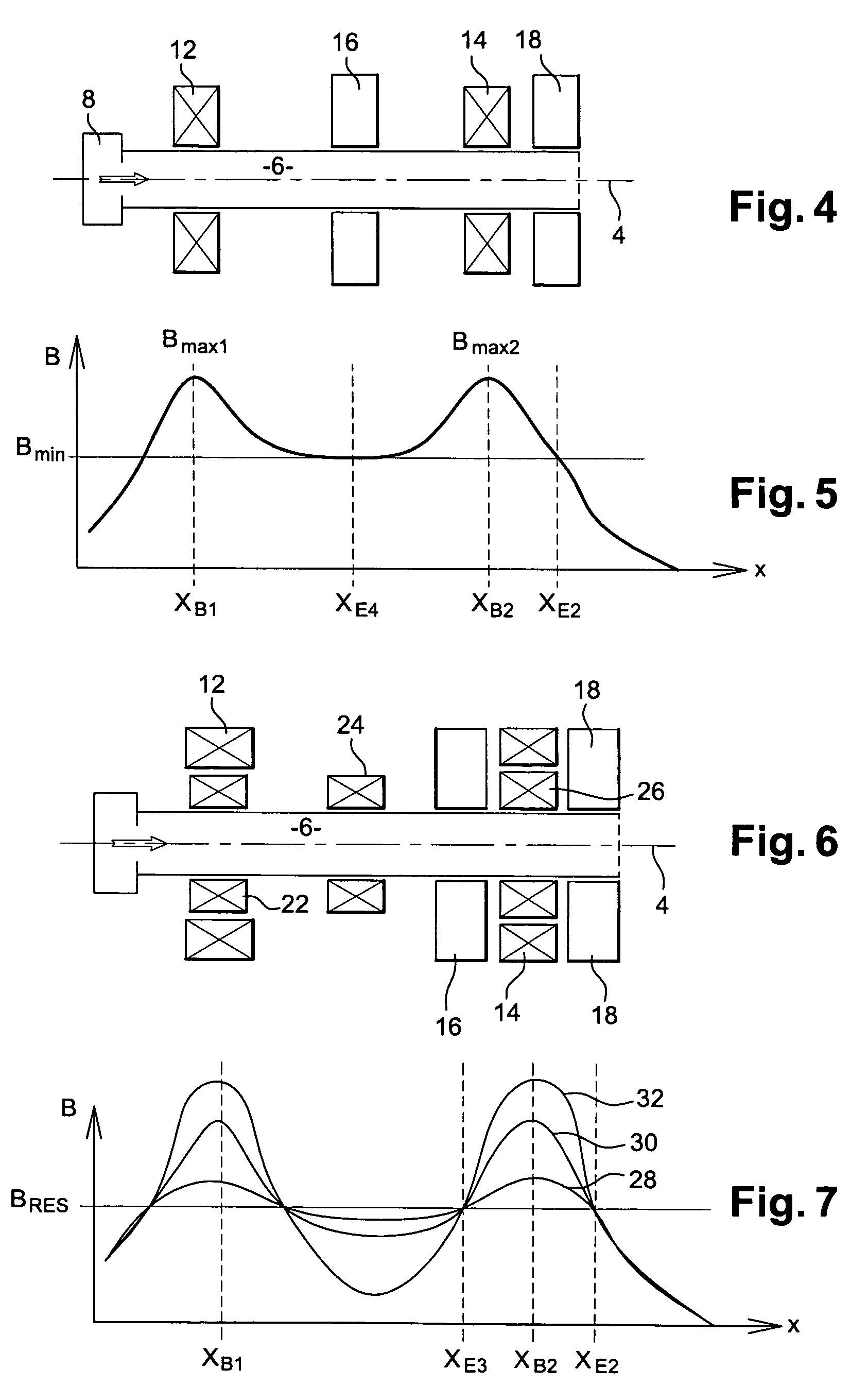Spacecraft thruster
a thruster and spacecraft technology, applied in the field of spacecraft thrusters, can solve the problems of reducing the service life of the thruster, affecting the stability of the thruster, and the need for a very high voltage between the accelerating grid,
- Summary
- Abstract
- Description
- Claims
- Application Information
AI Technical Summary
Problems solved by technology
Method used
Image
Examples
first embodiment
[0063]FIG. 1 is a schematic view in cross-section of a thruster according to the invention. The thruster of FIG. 1 relies on electron cyclotron resonance for producing a plasma, and on magnetized ponderomotive force for accelerating this plasma for producing thrust. The ponderomotive force is the force exerted on a plasma due to a gradient in the density of a high frequency electromagnetic field. This force is discussed in H. Motz and C. J. H. Watson (1967), Advances in electronics and electron physics 23, pp.153-302. In the absence of a magnetic field, this force may be expressed as
[0064]F=-q24mω2∇E2
for one particule
[0065]F=-ωp22ω2∇ɛ0E22
for the plasma with
[0066]ωp2=nⅇ2meɛ0
In presence of a non-uniform magnetic field this force can be expressed as:
[0067]F=-q24mω(∇E2(ω-Ωc)-E2(ω-Ωc)2∇Ωc)-μ∇B
[0068]The device of FIG. 1 comprises a tube 2. The tube has a longitudinal axis 4 which defines an axis of thrust; indeed, the thrust produced by the thruster is directed along this...
second embodiment
[0095]FIG. 3 is a schematic view in cross-section of a thruster in the invention. The example of FIG. 3 differs from the example of FIG. 1 in the position of the first resonant cavity16, which is located near to the coil 14 producing the second maximum of the magnetic field. Specifically, the resonant cavity is located along the axis at a coordinate x=xE3=205 mm. As represented on FIG. 2, this position is selected so that the value of the magnetic field at this position is identical to the value of the magnetic field at the position xE1. This makes it possible to use the same resonant cavity, without having to adapt the value of the frequency of the electromagnetic field. One could also use two resonant cavities at the coordinates xE1 and xE2 for generating the electromagnetic field within the ionization volume. Again, this may improve the proportion of gas ionized within the ionization volume. Having the cavity on the right-hand side may diminish erosion.
third embodiment
[0096]FIG. 4 is a schematic view in cross a thruster in the invention; FIG. 5 is a diagram of the intensity of magnetic and electromagnetic fields along the axis of the thruster of FIG. 4. The thruster of FIG. 4 is similar to the one of FIG. 1. However, the first resonant cavity 16 is located substantially in the middle of the coils 12 and 14. FIG. 5 is similar to FIG. 2, but shows the intensities of the magnetic field in the embodiment of FIG. 4. It shows that the first resonant cavity is located substantially at the coordinate xE4, which corresponds to the minimum value Bmin of the magnetic field. The frequency of the electromagnetic field is selected to be e.Bmin / 2πm. The second resonant cavity is located at a position where the magnetic field has the same value. Again, this makes it possible to use the same microwave generator for driving both cavities. The advantage of the embodiment of FIGS. 4 and 5 is that the value of the magnetic field is substantially identical over the vo...
PUM
 Login to View More
Login to View More Abstract
Description
Claims
Application Information
 Login to View More
Login to View More - R&D
- Intellectual Property
- Life Sciences
- Materials
- Tech Scout
- Unparalleled Data Quality
- Higher Quality Content
- 60% Fewer Hallucinations
Browse by: Latest US Patents, China's latest patents, Technical Efficacy Thesaurus, Application Domain, Technology Topic, Popular Technical Reports.
© 2025 PatSnap. All rights reserved.Legal|Privacy policy|Modern Slavery Act Transparency Statement|Sitemap|About US| Contact US: help@patsnap.com



